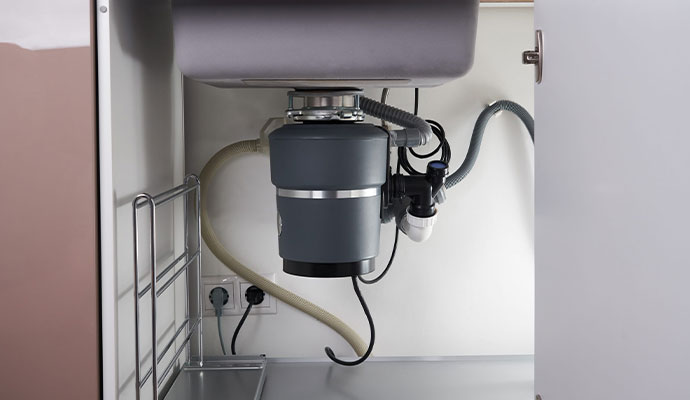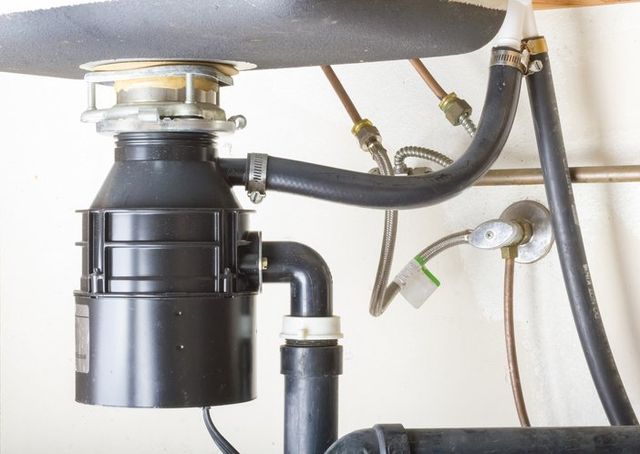Rapid Solutions for Fixing a Dripping Waste Disposal Unit
Rapid Solutions for Fixing a Dripping Waste Disposal Unit
Blog Article
What're your thoughts and feelings on Why Is ?

Waste disposal unit are necessary kitchen area appliances that assist in taking care of food waste effectively. However, a dripping garbage disposal can be an irritating and untidy problem to take care of. Fortunately, lots of leaks can be taken care of conveniently with a few straightforward steps. In this write-up, we will review how to take care of a leaking garbage disposal properly.
Introduction
Waste disposal unit are installed under kitchen area sinks and are made to shred food waste into smaller sized pieces, enabling it to travel through the pipes system easily. While these gadgets are usually reliable, leakages can take place gradually due to deterioration, loosened connections, or damages to the system.
Step-by-Step Overview to Fixing a Leaking Waste Disposal Unit
Switch off the Power
Prior to attempting any type of repair services, ensure that the power to the garbage disposal system is switched off to stop the risk of electric shock.
Find the Leakage
Identify the exact area of the leak and figure out the reason
Tighten up Links
Use a wrench to tighten any loosened connections between the disposal system and the pipes system.
Change Seals or Gaskets
If the leakage is due to worn seals or gaskets, eliminate the old elements and replace them with new ones.
Patching Fractures or Openings
For fractures or openings in the disposal device, usage epoxy or an appropriate patching material to seal the damaged area.
Identifying the Source of the Leak
Before trying to deal with a dripping garbage disposal, it is necessary to identify the source of the leak. This can generally be done with visual evaluation or by conducting simple tests.
Visual Inspection
Inspect the garbage disposal unit meticulously for any kind of indicators of water leak. Pay very close attention to areas around seals, gaskets, and connection points.
Testing for Leakages
One means to check for leaks is by running water through the disposal unit and looking for any kind of visible signs of leak.
Common Causes of Leaks in Waste Disposals
Worn Seals and Gaskets
Seals and gaskets play a crucial duty in stopping water from leaking out of the waste disposal unit. Gradually, these components can wear away, resulting in leakages around the disposal system.
Loose Connections
The connections in between the garbage disposal and the plumbing system can come to be loosened in time, causing water to leakage out during operation.
Splits or Holes in the Disposal Unit
Physical damages to the garbage disposal, such as splits or holes in the real estate, can likewise cause leaks.
Devices and Products Needed for Fixing a Dripping Garbage Disposal
Prior to beginning the fixing process, collect the needed devices and materials, consisting of a screwdriver, adjustable wrench, plumbing's putty, substitute seals or gaskets, and epoxy or patching material for fixing splits or holes.
Examining the Garbage Disposal After Repair
When the repair is total, test the waste disposal unit by running water with it to guarantee that the leakage has been solved.
Preventive Maintenance Tips to Prevent Future Leakages
To prevent future leakages, it is essential to carry out normal maintenance on your waste disposal unit. This consists of keeping it tidy, staying clear of putting non-food products or tough objects down the disposal, and regularly looking for leaks or other issues.
Final thought
To conclude, dealing with a leaking garbage disposal is a reasonably uncomplicated process that can be completed with standard devices and materials. By complying with the actions described in this write-up and exercising preventive maintenance, you can keep your waste disposal unit in good working problem and stay clear of costly repair work in the future.
What to Do About a Leaking Garbage Disposal
A leaking garbage disposal often goes unnoticed until you confront a sopping cabinet, a foul-smelling puddle, or an audible drip-drip-drip from the unit. The fix can be frustrating, too, because the leak can stem from a number of components in the system. Fortunately, with a little sleuthing, you can zero in on the leak and—depending on the exact location—stop the icky oozing and repair the component that caused it. Worst case scenario, if it turns out that the garbage disposal must be replaced, installing a new one is a reasonable do-it-yourself task for those with basic plumbing skills. Read on to keep the cash you’d otherwise hand over to a pro.
Prepare to find the leak
Prior to testing the garbage disposal for leaks, unplug it at the wall outlet and turn off the power from the breaker box to prevent electrical shock. Then insert a watertight sink stopper into your sink drain and wipe the unit dry with a clean cloth. In any handy container, mix a few drops of food coloring into a few cups of water, and pour the dyed water onto the sink stopper to help you locate the leak.
Investigate the source
the top, where the disposal meets the sink drain the side, where the dishwasher hose or main drain pipe connects to the disposal or the bottom of the unit Inspect each of these locations while gliding a light-colored rag over the unit; the dyed water will readily show on the rag and reveal the location of the leak. If a leak isn’t immediately apparent, remove the sink stopper and pour a few more cups of dyed water down the sink drain, then check for leaks again. Leaks near the top of the unit are more likely to show themselves while the sink is plugged, while side and bottom leaks are more noticeable while the sink is unplugged.
The metal sink flange that sits directly inside the sink drain is typically sealed around the top with plumber’s putty (a clay-like sealant) and then secured from under the sink with bolts. If the plumber’s putty deteriorates, or the bolts loosen, the flange can no longer form a watertight seal between the sink drain and the disposal—which could cause a leak at the top of the unit.
To reseal the leaky flange, you must first detach the garbage disposal. Start by loosening the screws securing the main drain pipe to the disposal, then loosen the screws in the metal clamp securing the dishwasher hose to the disposal and detach the drain pipe and dishwasher hose from the disposal. Loosen the screws in the mounting ring that connects the disposal to the metal mounting assembly beneath the sink, then pull down the disposal and carefully set it on a clean, dry surface. Loosen the bolts in the mounting assembly with a wrench, then pull down the mounting assembly and set it near the disposal.

I came across that entry on How to fix a pretty consistent leak from my garbage disposal while surfing the web. Those who liked our blog post if you please don't forget to share it. Thanks for your time invested reading it.
Book Appointment Report this page